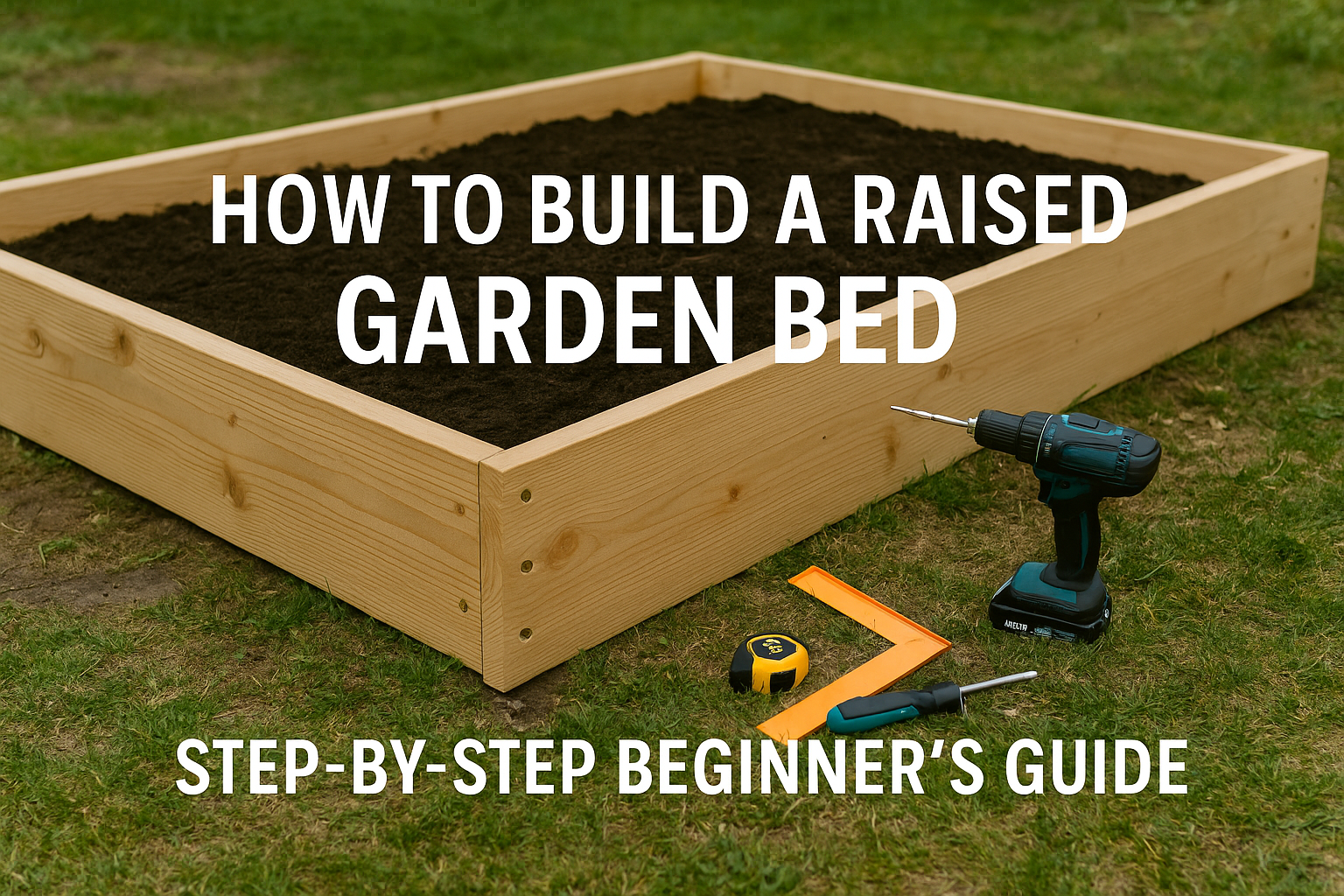Raised garden beds are a great way to grow vegetables, herbs, and flowers—especially if you’re working with limited space or poor soil. They offer better drainage, less weeding, and greater control over your garden’s environment. In this guide, you’ll learn how to build your own raised garden bed from scratch, no experience needed.
Why Choose a Raised Garden Bed?
- Improves soil drainage and prevents compaction
- Keeps weeds and pests under control
- Extends growing season by warming up faster in spring
- Reduces strain on the back and knees
- Allows you to garden anywhere, even on concrete or balconies
It’s the perfect project for beginners who want great results from day one.
What You’ll Need
Materials:
- Untreated wood (cedar or pine) or recycled composite boards
- Wood screws or corner brackets
- Drill or screwdriver
- Measuring tape
- Level
- Landscape fabric or cardboard (optional)
- Soil and compost
Dimensions (starter size):
- 4 feet long x 4 feet wide x 12 inches high
- This size is manageable, provides ample space, and is easy to reach from all sides.
Step 1: Choose the Location
- Pick a spot that gets at least 6–8 hours of sunlight daily
- Avoid low-lying areas that flood or have poor drainage
- Make sure the ground is level or use bricks to stabilize uneven terrain
Consider proximity to a water source.
Step 2: Assemble the Frame
- Cut your boards to desired length
- Drill pilot holes to avoid splitting the wood
- Screw the boards together at corners using screws or brackets
- Use a level to ensure the frame sits flat on the ground
You now have a basic garden bed structure ready to go.
Step 3: Prepare the Ground
- Clear grass and weeds from inside the frame
- Lay landscape fabric or cardboard at the bottom to suppress weeds
- This also improves drainage while keeping soil in place
Skip this step if placing the bed on concrete—just ensure drainage.
Step 4: Fill with Soil
A good mix promotes plant growth:
- 50% topsoil
- 30% compost
- 20% peat moss, coconut coir, or vermiculite
Mix thoroughly to create a loose, fertile growing medium.
Step 5: Plant Your Garden
- Start with easy crops like lettuce, radishes, herbs, and cherry tomatoes
- Follow spacing guides on seed packets
- Use companion planting techniques for better results
- Label plants for easy identification
Water well after planting.
Step 6: Maintain Your Raised Bed
- Water regularly, especially in warm weather
- Add compost every few weeks to enrich soil
- Mulch the surface to retain moisture and suppress weeds
- Rotate crops each season to prevent soil depletion
Raised beds are low maintenance but do require consistent attention.
Optional: Add Enhancements
- Install a trellis for climbing vegetables
- Build a protective cover to keep out pests or harsh weather
- Paint or stain the wood for aesthetics (use non-toxic options)
Your raised bed can be as simple or as stylish as you like.
Final Thoughts: Grow Higher, Grow Smarter
Building a raised garden bed is one of the best investments you can make in your garden. It’s beginner-friendly, cost-effective, and highly productive. Whether you’re growing food or flowers, a raised bed gives your plants the foundation they need to thrive.

